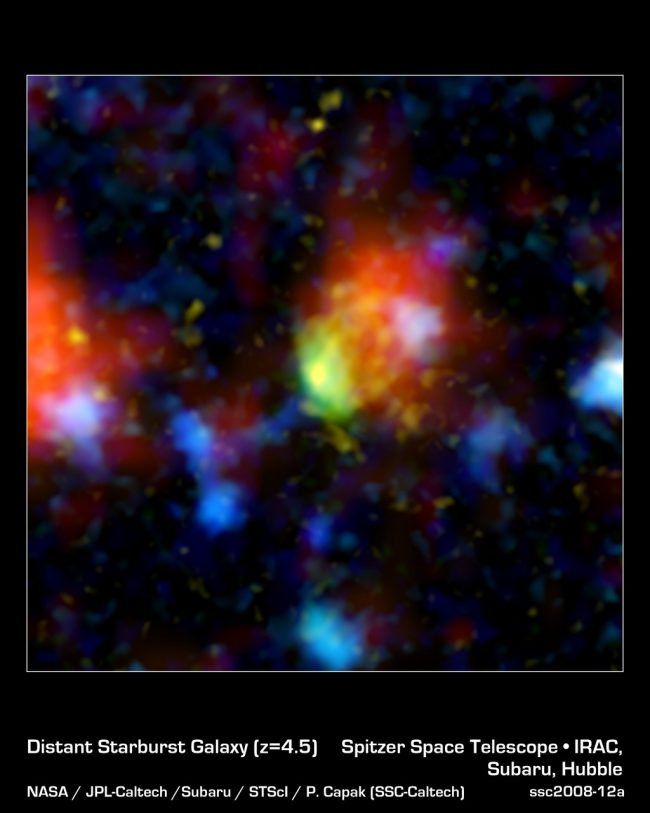
A wealth of starburst galaxies
The Netherlands Research School for Astronomy (NOVA) said this morning (April 4, 2022) that a new analysis of more than 20,000 distant galaxies has revealed an unexpected wealth of starburst galaxies in the early universe. Starburst galaxies have an exceptionally high rate of star formation, some 10 times or more greater than in ordinary galaxies like our Milky Way. These astronomers said that, in the first few billion years after the Big Bang, the universe contained far more starburst galaxies than theoretical models predict. They said that – when the universe was only a few billion years old (in contrast to 13 billion years old today) – starburst galaxies produced as many as 60-90% percent of stars.
So the early universe was a hotbed of star formation!
Astronomers from University of Groningen (the Netherlands) led this new research, which will soon be published in the peer-reviewed Astrophysical Journal (preprint at arXiv).
Studying galaxies from 11 to 13 billion years ago
Pierluigi Rinaldi at the University of Groningen (the Netherlands) led the research team. The team studied observational data from more than 20,000 distant galaxies. These astronomers used data collected in recent years with the Hubble Space Telescope, with the MUSE instrument on the European Very Large Telescope in Chile and with the Spitzer Space Telescope. Their statement explained:
The telescopes looked so far back in time that the researchers were able to study galaxies that formed 11 to 13 billion years ago. The Big Bang was 13.7 billion years ago.
Rinaldi commented:
In this sense, you can compare it to the growth spurt in humans. That is also strongest during infancy.

Galaxies in a growth spurt
The NOVA statement said:
Starburst galaxies are galaxies in a growth spurt. And they produce many more stars than normal in a relatively short period of time. A stellar growth spurt lasts 10 to 100 million years. Galaxies often live for billions of years and can undergo several growth spurts. To trigger a growth spurt, a sudden inflow of gas is needed, otherwise the building blocks for new stars will soon run out. Such an inflow can occur, for example, when two galaxies approach each other …
The analysis shows that in the first few billion years after the Big Bang, about 20-40% of all star-forming galaxies were starburst galaxies. These galaxies in a growth spurt accounted for 60-90% of the new increase in stars.
By comparison, today the universe is much quieter and only about 10 percent of new stars are born in starburst galaxies.

Realizing the importance of starburst galaxies
Until recently, starburst galaxies were considered unusual and of minor importance in the formation and growth of galaxies. Rinaldi commented:
Even the latest and most sophisticated models of galaxy formation had not predicted this. It seems likely that the physical processes occur at too small a scale for the models to account for them.
Karina Caputi (University of Groningen), Rinaldi’s supervisor, added:
Of course, it gives us something to think about with regard to those models. And that’s a good sign.
Caputi added she wants to further investigate the origin and evolution of the first galaxies.

Bottom line: The early universe was a hotbed of star formation. In its first few billion years, our universe apparently produced 60-90% of its stars in starburst galaxies. These galaxies produce stars at a rate 10 times or more faster than the ordinary galaxies we see around us in space today.
Source: The galaxy starburst/main-sequence bimodality over five decades in stellar mass at z ~ 3-6.5
The post Starburst galaxies flourished in early universe first appeared on EarthSky.
0 Commentaires